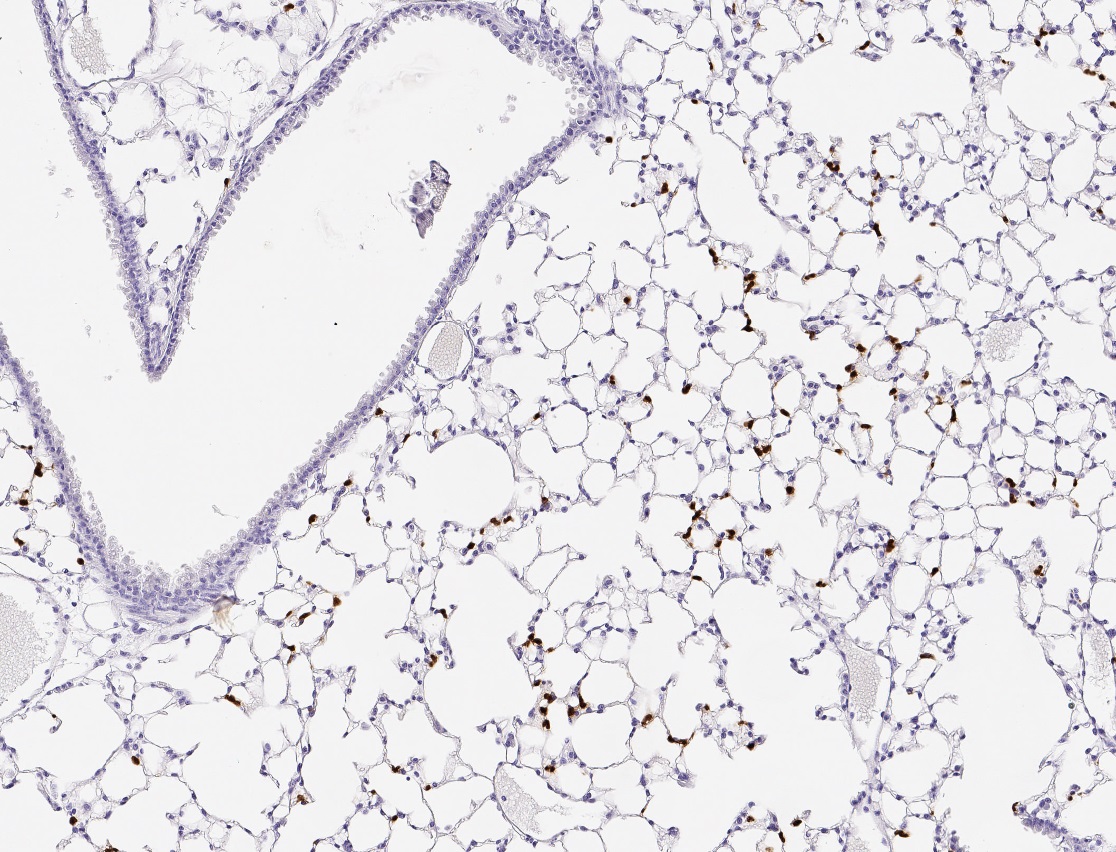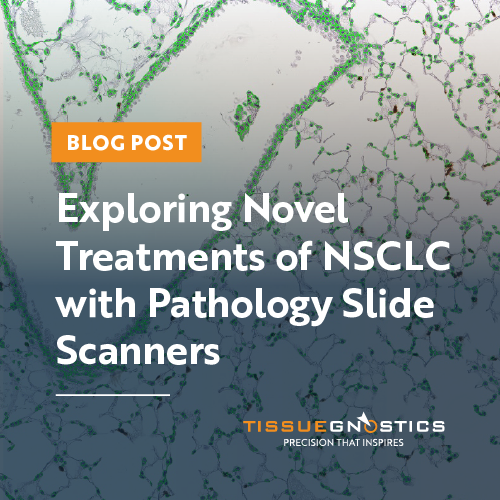
Exploring Novel Treatments of Non-Small Cell Lung Cancer with Pathology Slide Scanners
Non-small cell lung cancer (NSCLC) is a challenging disease, accounting for approximately 85% of all lung cancer cases.
Blog Post

Exploring Novel Treatments of Non-Small Cell Lung Cancer with Pathology Slide Scanners
03 Nov, 2025
As scientists and medical professionals continue to combat this prevalent disease, advancements in technology and treatment methodologies offer promising avenues for improved outcomes. One such innovation is the use of pathology slide scanners combined with digital pathology and artificial intelligence (AI) tools, which gained FDA approval as recently as 2022. This blog explores how these technologies are transforming the landscape of NSCLC treatment and paving the way for new targeted therapies, such as antibody-conjugated drug-loaded nanotherapeutics (ADNs).
Digital Pathology: A New Era in Cancer Diagnostics
The integration of pathology slide scanners into cancer diagnostics is transformative. By digitizing histopathological slides, these scanners allow for more precise and rapid analysis of tissue samples. Digital pathology also enhances the ability to leverage AI for the diagnosis and prognostication of various cancers, including NSCLC.
The FDA approval of AI-based tools in digital pathology signifies a critical milestone. With these tools, pathologists can quickly assess cellular markers indicative of cancer progression or response to therapy. For example, analyzing the expression of markers like PD-L1 and CD47 in NSCLC can help determine the suitability of specific immunotherapies. Pathology slide scanners offer a streamlined approach to capturing these data points, which are crucial in personalizing treatment plans.
Antibody-Conjugated Drug-Loaded Nanotherapeutics: An Emerging Treatment for NSCLC
One promising treatment emerging from this digital diagnostic revolution is antibody-conjugated drug-loaded nanotherapeutics (ADNs). ADNs represent a novel approach to immunotherapy that combines the benefits of traditional chemotherapy with the precision of targeted therapy. These nanotherapeutics are designed to deliver drugs directly to cancer cells, minimizing collateral damage to healthy tissue - a frequent drawback of conventional cancer treatments.
A recent study highlights the effectiveness of ADNs in treating NSCLC by targeting two specific proteins, PD-L1 and CD47. These proteins play significant roles in cancer cell survival by evading immune system recognition. PD-L1 suppresses effector T-cell activity, while CD47 interacts with macrophages, issuing a “do not eat me” signal that protects cancer cells from being attacked. By using antibodies, that block both PD-L1 and CD47, on the surface of nanoparticles, researchers have created a therapeutic agent that can both activate T-cells and inhibit tumor growth.
How Pathology Slide Scanners Contribute to ADN Treatment Selection
Pathology slide scanners play a crucial role in identifying patients who could benefit from ADN-based therapies. Scanners equipped with analysis software and AI tools can help rapidly assess PD-L1 and CD47 expression levels, determining whether a patient is a suitable candidate for this type of treatment. This capability is particularly beneficial given the heterogeneity of NSCLC; not all patients express these markers at levels that would make them responsive to ADN therapies.
Moreover, slide scanners contribute to a more accurate prognosis by quantifying marker expression across entire tumor tissue sections. With this comprehensive digital analysis, pathologists can distinguish between high-expressing and low-expressing regions, thereby refining the precision of treatment strategies. This targeted approach is especially critical for NSCLC, where the effectiveness of immunotherapies varies widely depending on individual tumor biology.
Advantages of ADNs Over Traditional NSCLC Treatments
One of the major advantages of ADNs is their ability to carry multiple therapeutic agents in a single nanoparticle, allowing for a combination of treatments that would be difficult to administer simultaneously through conventional means. In the case of NSCLC, ADNs can deliver a PI3K/mTOR pathway inhibitor alongside antibodies against PD-L1 and CD47. This dual-action strategy attacks the cancer on two fronts: by stimulating the immune system and inhibiting pathways critical to cancer cell survival and proliferation.
Additionally, ADNs reduce the potential for off-target effects, a common issue with traditional chemotherapy. Since the nanoparticles are engineered to release their drug payloads only in the presence of specific cancer markers, they help spare healthy cells from exposure to toxic substances. This targeted release also addresses another common drawback of NSCLC therapies: resistance. By precisely targeting cancer cells and reducing systemic exposure, ADNs minimize the risk of resistance development, potentially leading to more sustainable long-term outcomes for patients.
Closing Thoughts
The fight against NSCLC is entering a promising era, where technology and targeted therapies combine to create more precise and effective treatments. With the aid of pathology slide scanners and the power of antibody-conjugated nanotherapeutics, medical professionals can now offer NSCLC patients a more personalized and potentially more successful treatment journey. As the field of digital pathology continues to evolve, so too will the landscape of cancer treatment, bringing us one step closer to a future where NSCLC is not just treatable but perhaps even curable.
If you’re interested in learning more about how TissueGnostics is contributing to this digital pathology revolution, explore our news section for the latest updates on applied digital pathology.
References & Further Reading
- Tanmoy Saha et al. Antibody nanoparticle conjugate–based targeted immunotherapy for non–small cell lung cancer.Sci. Adv.10,eadi2046(2024).DOI:10.1126/sciadv.adi2046

